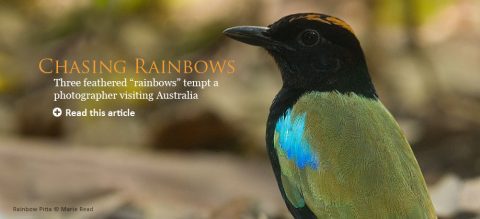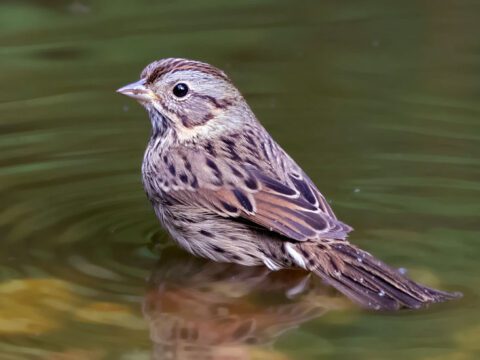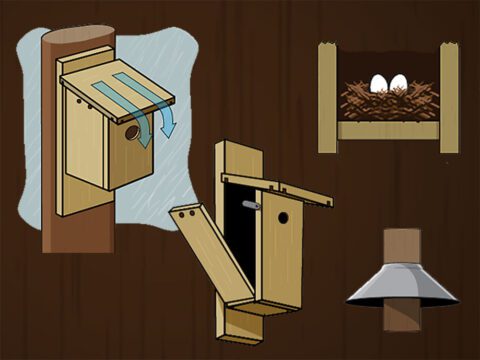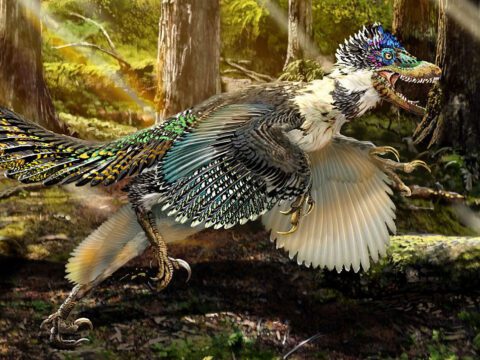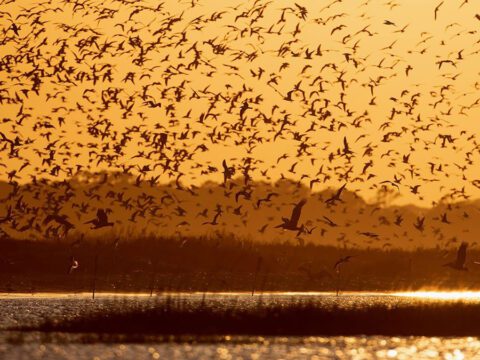Migration Destinations: Western Mexico’s Thorn Forests
by Hugh Powell
January 15, 2010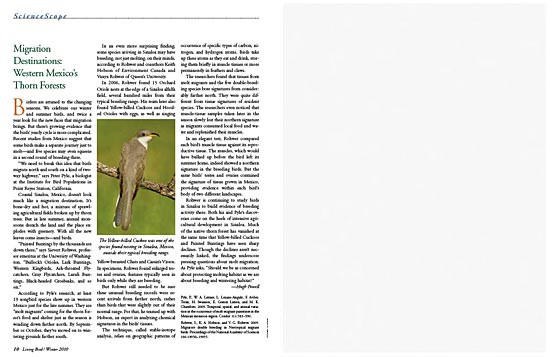
Birders are attuned to the changing seasons. We celebrate our winter and summer birds, and twice a year look for the new faces that migration brings. But there’s growing evidence that the birds’ yearly cycle is more complicated. Recent studies from Mexico suggest that some birds make a separate journey just to molt—and five species may even squeeze in a second round of breeding there.
“We need to break this idea that birds migrate north and south on a kind of two-way highway,” says Peter Pyle, a biologist at the Institute for Bird Populations in Point Reyes Station, California. Coastal Sinaloa, Mexico, doesn’t look much like a migration destination. It’s bone-dry and hot, a mixture of sprawling agricultural fields broken up by thorn trees. But in late summer, annual monsoons drench the land and the place explodes with greenery. With all the new leaves come insects—and birds.
“Painted Buntings by the thousands are down there,” says Sievert Rohwer, professor emeritus at the University of Washington. “Bullock’s Orioles, Lark Buntings, Western Kingbirds, Ash-throated Flycatchers, Gray Flycatchers, Lazuli Buntings, Black-headed Grosbeaks, and so on.”
According to Pyle’s research, at least 19 songbird species show up in western Mexico just for the late summer. They are “molt migrants” coming for the thorn forest’s food and shelter just as the season is winding down farther north. By September or October, they’ve moved on to wintering grounds farther south.
In an even more surprising finding, some species arriving in Sinaloa may have breeding, not just molting, on their minds, according to Rohwer and coauthors Keith Hobson of Environment Canada and Vanya Rohwer of Queen’s University.
In 2006, Rohwer found 15 Orchard Oriole nests at the edge of a Sinaloa alfalfa field, several hundred miles from their typical breeding range. His team later also found Yellow-billed Cuckoos and Hooded Orioles with eggs, as well as singing Yellow-breasted Chats and Cassin’s Vireos. In specimens, Rohwer found enlarged testes and ovaries, features typically seen in birds only while they are breeding.
But Rohwer still needed to be sure these unusual breeding records were recent arrivals from farther north, rather than birds that were slightly out of their normal range. For that, he teamed up with Hobson, an expert in analyzing chemical signatures in the birds’ tissues.
The technique, called stable-isotope analysis, relies on geographic patterns of occurrence of specific types of carbon, nitrogen, and hydrogen atoms. Birds take up these atoms as they eat and drink, storing them briefly in muscle tissues or more permanently in feathers and claws.
The researchers found that tissues from molt migrants and the five double-breeding species bore signatures from considerably farther north. They were quite different from tissue signatures of resident species. The researchers even noticed that muscle-tissue samples taken later in the season slowly lost their northern signature as migrants consumed local food and water and replenished their muscles.
In an elegant test, Rohwer compared each bird’s muscle tissue against its reproductive tissue. The muscles, which would have bulked up before the bird left its summer home, indeed showed a northern signature in the breeding birds. But the same birds’ testes and ovaries contained the signature of tissue grown in Mexico, providing evidence within each bird’s body of two different landscapes.
Rohwer is continuing to study birds in Sinaloa to build evidence of breeding activity there. Both his and Pyle’s discoveries come on the heels of intensive agricultural development in Sinaloa. Much of the native thorn forest has vanished at the same time that Yellow-billed Cuckoos and Painted Buntings have seen sharp declines. Though the declines aren’t necessarily linked, the findings underscore pressing questions about molt migration. As Pyle asks, “Should we be as concerned about protecting molting habitat as we are about breeding and wintering habitat?”
References:
Pyle, P., W. A. Leitner, L. Lozano-Angulo, F. Avilez-Teran, H. Swanson, E. Gomez Limón, and M. K. Chambers. 2009. Temporal, spatial, and annual variation in the occurrence of molt-migrant passerines in the Mexican monsoon region. Condor 111:583–590.
Rohwer, S., K. A. Hobson, and V. G. Rohwer. 2009. Migratory double breeding in Neotropical migrant birds. Proceedings of the National Academy of Sciences 106:19050–19055.

All About Birds
is a free resource
Available for everyone,
funded by donors like you
American Kestrel by Blair Dudeck / Macaulay Library
